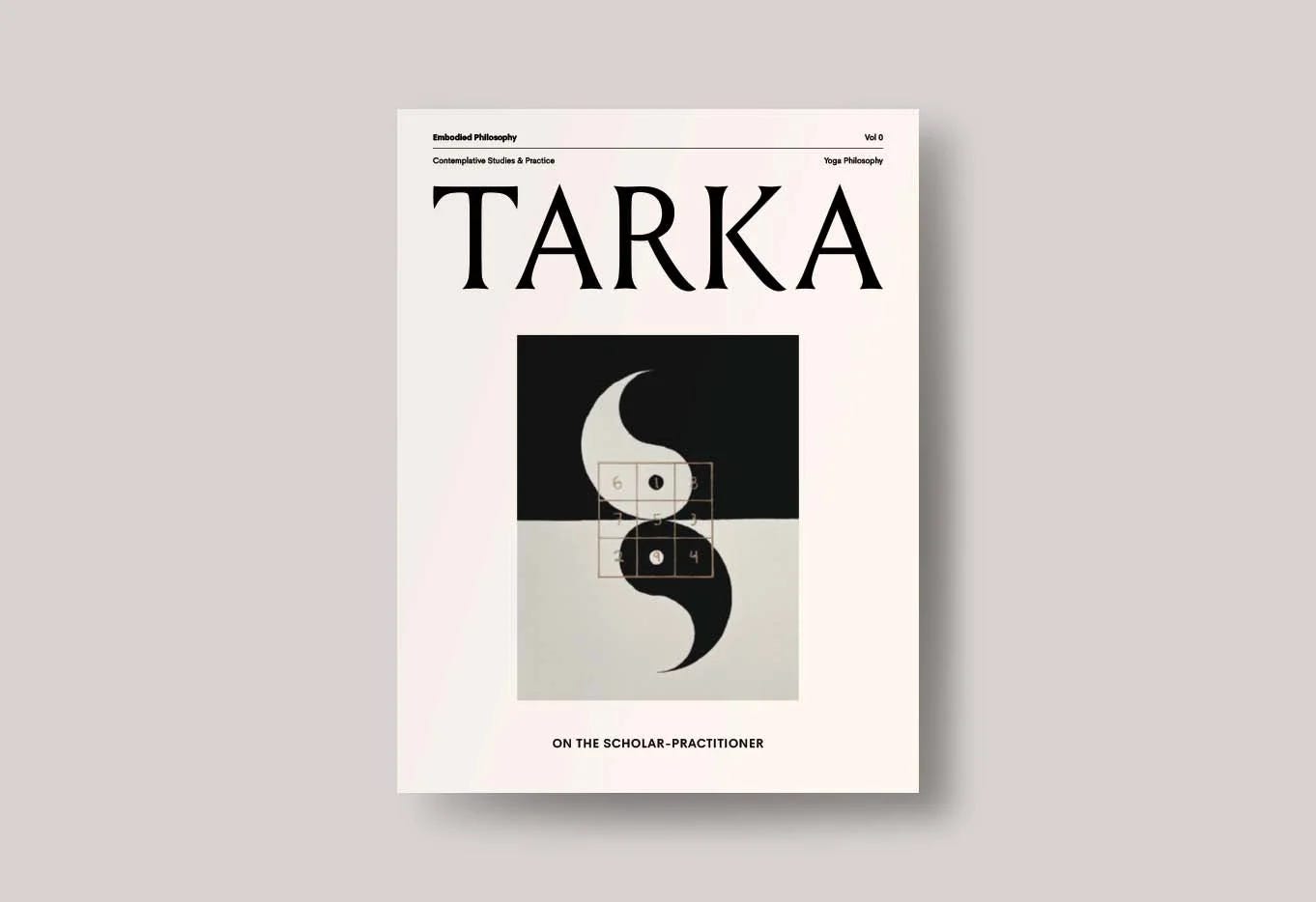What’s not Etic about an Emic Perspective?
By Tova Ollson
The question of who is better suited to describe religious practices, the initiated practitioner or the distanced scholar, the “insider” or the “outsider”, has long haunted religious studies. The question suggests a binary opposition that conceals both the lived experiences of scholar-practitioners and the nuance present in all great scholarship. This binary opposition, or the tendency to dichotomize, also form the basis of the terms “etic” and “emic”.
The terms were coined in 1954 by linguist Kenneth Pike, who argued that the tools developed for describing linguistic behaviours could be adapted to the description of any human social behaviour. Emic and etic were derived from the linguistic terms phonemic and phonetic respectively, where phonemics refers to elements of meaning and phonetics refers to elements of sound.
In the study of religion, emic has come to describe the perspective of the subject, while the term etic indicates the perspective of the observer/researcher. It is also generally understood that the term emic describes a culturally- specific position (or the “small perspective”) while the etic describes a universal position (or the “bird’s eye view”).
The possibility of a truly objective description was discounted by Pike himself in his original work; he proposed the emic/etic dichotomy in anthropology as a way around philosophical issues about the nature of objectivity. But, as often is the case, the general use of the terms have taken on a life of their own.
In an article from 2011, Jeppe Sinding Jensen describes the insider-outsider issue within academia, and especially in the study of religion, as a stubborn one, claiming that not only is the distinction theoretically dubious but methodologically worthless. Jensen argues, inspired by Ludwig Wittgenstein and Donald Davidson, that there is no theory behind the distinction, but that it rests on a “myth of the subjective,” which really shouldn’t attract much support.
The myth that Jensen refers to is that the religious experience is a subjective one, indescribable and unknowable to the observer. But whether claiming an outgrown myth of subjectivity or, as I will argue, an outdated quest for objectivity as the structural guardian of the distinction “insider-outsider” or “emic-etic,” it is no doubt a problematic one, enhancing illusionary boundaries and dualistic division.
Over the course of my own research as both a practitioner and researcher of yoga and tantra it has been suggested by others that practice would somehow contaminate the pristine quality of my research. At the same time, my familiarity with the environment and its vocabulary has made qualitative interviewing possible, while my own position seems to partially erase the binary opposition between the researched and the researcher, the observer and the observed.
As the postmodern wave moves across the academy, waking scholars up to self- reflexivity and an awareness of their own agency, more and more have confessed to the mark they leave on their research, in turn recognizing themselves as co-creators more than objective observers. In a way, this makes a liminal creature out of the scholar. She is not quite inside and not quite outside, but as Jeffrey J. Kripal so brilliantly puts it, somebody capable of looking through multiple lenses, offering both distance and depth. At times, Kripal argues, the scholar even becomes a mystic of hermeneutics. He writes:
Scholars of religion, it turns out, often have profound religious experiences reading and interpreting the texts they critically study, and these events have consequences for the methods and models they develop, the conclusions they come to, and even for the traditions they study.
What Kripal suggests is that the scholar, through a “radical criticism” and “ontological openness” embodies a type of mystical mode that is both deconstructive and transgressive, pushing the boundaries of knowledge.
Jensen´s standpoint is quite the opposite. He argues that we need to demystify the fact that different groups of people hold different knowledge, whether that knowledge is acquired or innate, cultural, or religious. He continues by pointing out that the role of the scholar is to speak about the religions, not to propagate the self-image of the religions. He furthers his argument by identifying “cultural essentialism” as the tendency to believe that members of a culture (insiders) share certain specific traits that warrant them being treated as having a distinct nature and qualities that the outsider can never possess.
This highlights the growing problem in the study and practice of yoga, where honest interest and expertise can be named cultural appropriation and neo-colonialism and individuals inside and outside of academia are expected to stand as representatives for their own culture or religion. This, Jensen argues, is a manufactured problem that serves primarily as a technique of exclusion and that feeds the old notion of a separation between the social scientists (deemed reductionists) and the “real” historians of religions (who understood and knew).
“This highlights the growing problem in the study and practice of yoga, where honest interest and expertise can be named cultural appropriation and neo-colonialism and individuals inside and outside of academia are expected to stand as representatives for their own culture or religion.”
But then what about the mystics of hermeneutics, or the gnostic scholars, as Kripal would call them? Isn’t it the case that scholars sometimes get transmission from the texts they translate or get initiation from the groups that they study? And doesn’t that privileged discourse (to use Jensen´s term) give access to something the outsider will never know? In my view, the point is not the knowledge received or unveiled, but the willingness to not value it higher than other knowledge. This seems to be the real juice of the matter: to overcome the enticement of hierarchical or binary thinking. To resist the preference of one perspective or position over the other. Kripal suggests this way of working as “methodological nondualism.” He writes:
One might say that the superior hermeneutic is the one that can encompass and understand and even at times explain the most data, not the one that insists on denying, censoring, or reducing that which it cannot (in the case of the secular scholar) or does not want (in the case of the devotee) to see.
To this point, new keywords like “transparency” and “research responsibility,” might replace the term objectivity within the next couple of years, as we move towards an open-eyed non-hierarchical approach and away from the discourse of contempt that has been the impending flavour of critical academics. The academic language is and should remain one that demands critical investigation. But demanding critical investigation is also one of the hallmarks of a spiritual life. The relentless search for the truth about reality is what practitioners and researchers share. Both of them need to be able to tolerate groundlessness, or periods of not knowing, in order to expand knowledge. And both groups use methods of observation, engagement, and the response of peers and teachers in order to establish that knowledge as valid.
The academic language is and should remain one that demands critical investigation. But demanding critical investigation is also one of the hallmarks of a spiritual life. The relentless search for the truth about reality is what practitioners and researchers share. Both of them need to be able to tolerate groundlessness, or periods of not knowing, in order to expand knowledge.
In my understanding, the real challenge for all of us seems to be to remain critical without becoming disillusioned. To be able to withstand the possibility of life and religious experiences not being as easily processed, and handily labelled as we would have liked. And to consider that, while all knowledge is not equally true, “scholars are not religiously inept, and disciples are not dumb.”




I welcome this article and find much to agree with. An essential topic in contemporary yoga and meditation research is the tension between etic (outsider, objective) and emic (insider, experiential) perspectives. While integrating both viewpoints can broaden our understanding, etic observations alone are insufficient to fully comprehend the deep subjective and spiritual realities of practices like meditation. Objective integration cannot fully interpret emic experiences such as deep states of meditation—they can only be grasped subjectively, within the framework of the practitioner’s own lived reality. For this reason, full integration remains elusive, and academic inquiry alone cannot exhaustively understand practice from within.
This illustrates the limits of a strictly postmodern, anti-hierarchical approach. Yoga and tantra traditionally recognize a hierarchy of being—body, mind, spirit—where each level nests within the other. Integration is vital, but it can only take us so far in apprehending that which is ultimately ineffable: the highest realms of atman, spirit, purusha, Shiva, or Cit. The promise of evolving academic discourse, therefore, lies in its willingness to include spiritual wisdom, provided it avoids the reductionism and dismissal that can result when objectivist standards dominate interpretation.
A holistic approach honors multiple ways of knowing, acknowledging that “knowing” itself operates at different levels. The interior experience of deep meditation and subjective enlightenment, for example, is only accessible within its own domain through practice. When such experiences are described to an outsider or etic observer, only partial fragments can be communicated and grasped. Words, graphs, and discussion can inspire, guide, and reflect—but never fully represent the interiority of the experience itself, just as a map is never the territory.